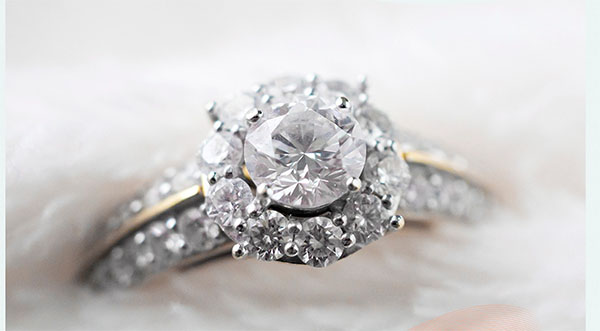Lab-Grown Diamonds Continue Coming Down in Price
By Space Coast Daily // January 8, 2023

The price is considered the core reason for the lab-grown diamonds market expansion.
Many skeptics believe that cheapness is the only advantage of the product that preconditions purchasing choice. People do not need to spend big money to buy lab-grown diamonds and because of this, they prefer them.
However, these skeptics are missing one important fact – the price is a reflection of synergy between multiple favorable or unfavorable market factors; it is just the tip of the iceberg.
So, what is hidden below the water’s surface? Which of the factors influences the price for lab-grown diamonds and why is constantly coming down, unlike the price for natural diamonds? And is there any aspect that can slow this process down?
Let’s start with the figures to see the overall scale of the price decline
From the moment of the emergence of lab-grown diamonds, they were cheaper than natural diamonds. At the moment of their market acceptance, the gap in price between these two products was around 30 percent. As the popularity of manufactured stones was growing, the price gap was constantly enlarging as well.
From 30 to 50 percent, then – up to 60 percent, and currently it is more than 70 percent.
Edahn Golan explains this by a sharp price fall in the wholesale diamond market. Thus, just the third quarter of the year has brought a decline from 6 to 37 percent. The interesting thing is in pricing big diamonds – the price for them is coming down faster and the decline is much bigger than for a small gem.
One-carat lab-grown diamond rounds declined by around 22% while the prices for two-carat gems dropped nearly 33%. 11 percent is a significant difference, especially for a twice bigger product.
And now about reasons
Mass production and advanced technologies
There is no surprise that mass production enables producers to reduce manufacturing costs so the less they have to spend for growing diamonds the lower price can be for it.
This simple market rule is enhanced also with two additional factors – technologies and broad application of lab-grown diamonds.
Innovations are bringing new and new ways of minimizing production costs but not least. Advanced technologies also enable manufacturers to produce larger rough and make it more prevalent.
The application also matters a lot and plays a significant role in maintaining constant demand for mass production. What a huge demand for lab-grown diamonds comes from the jewelry industry it cannot provide the full-scale use of production facilities. If working half-loaded, the laboratories will lose and not be able to offer low prices.
Yet, lab-grown diamonds are in use in many different sectors. The most traditional use is in the industrial sector where they are used in drilling and cutting. By the way, man-made diamonds were initially invented for industrial purposes to replace natural diamonds that are very expensive for such applications.
Inventors did not expect that their invention will be so ideal alternative with the same properties and society can use lab-grown diamonds in such delicate spheres as optics, lasers, and electronics. the spectrum of application is constantly widening, and it allows laboratories to work on full load.
Market competition
Diamond manufacturing becomes a mainstream option that can bring revenue in a short term. That is why the number of manufacturers is growing, consequently, the market competition becomes severer.
It means that the battle for consumers’ hearts and wallets fosters implementing innovations, diverse upgrading, and marketing campaigns – all this affects the price; producers are seeking ways to make it attractive.
Consumer expectations
There is no need to buy tiny diamonds when you can afford a big gem. Industry became a hostage of the affordability-based policy. Now people do not want to purchase small lab-grown diamonds. The sales of two-carat stones doubled in the third quarter of 2022.
Large lab-grown diamonds occupied a niche of small gems and people expect that this product will as affordable as the small one. Considering a previous factor – market competition – manufacturers cannot ignore the expectation and they are forced to lower initial high prices to meet consumers’ expectations.
What can make price decline slower?
Madestones’ observers consider that there is no other way to keep the price at a current level except for branding. And, indeed, one can observe how willingly famous brands start embracing lab-grown diamonds.
For sure, branded diamonds will cost more than usual but their price will be empowered with brand-inherent values.












